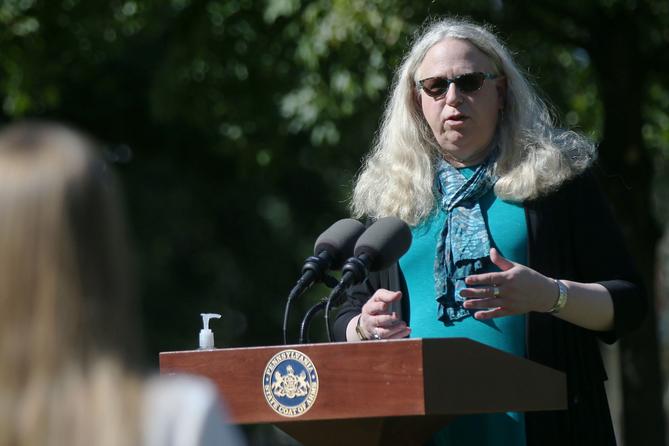Spotlight PA is an independent, non-partisan newsroom powered by The Philadelphia Inquirer in partnership with PennLive/The Patriot-News, TribLIVE/Pittsburgh Tribune-Review, and WITF Public Media. Sign up for our free newsletters.
HARRISBURG — During a federal confirmation hearing Thursday, former Health Secretary Rachel Levine was questioned about the ongoing data discrepancies in Pennsylvania’s public reports on nursing home coronavirus deaths and cases.
Levine, who was nominated by President Joe Biden to serve as assistant health secretary, oversaw the Pennsylvania Department of Health through the first year of the pandemic, which has killed thousands of people in long-term care facilities.
U.S. Sen. Susan Collins (R., Maine) said Levine had assured her that Pennsylvania had accurately reported deaths in these homes, unlike New York, where the attorney general found that the Cuomo administration had undercounted fatalities by the thousands.
But Collins questioned that claim, citing Spotlight PA reporting from September 2020 that found weekly reports released by the state health department were consistently missing death and case data for more than 100 of the state’s 693 nursing homes.
In her response, Levine pointed to lags in the state’s electronic death reporting system, or EDRS, and said slow uploads to that system explained why data outlining cases and deaths in nursing homes appeared incomplete.
That is not what reporting by Spotlight PA has revealed.
The state first started releasing weekly reports with cumulative data on resident deaths, resident cases, and staff cases for each nursing facility in May. That disclosure came after weeks of pressure from advocacy groups representing nursing home residents and families.
Officials initially resisted releasing facility-by-facility data, citing a decades-old law that prohibits the release of disease records by state or local authorities.
The first facility-level reports released by the state in May were filled with errors that took several days to correct. Those early reports were supplemented with data from PA-NEDSS, the state’s disease reporting system, which collects data from health-care systems and labs.
More recent versions of the reports contain data that is self-reported by nursing homes directly to the state health department using other software portals — not the electronic death reporting system as stated by Levine during the confirmation hearing.
By September, more than six months since the first COVID-19 case in Pennsylvania, problems with the data had not been corrected. With many facilities still closed to visitors, advocates for nursing home residents and families said that there were few ways for families to know what was going on inside facilities and to monitor outbreaks.
Data related to a deadly outbreak at one Lehigh County facility was not included in the reports until August — after 80 residents had died, one of the highest death tolls in a nursing home in the state.
In a June 18 letter, the health department said nursing home administrators could face daily fines or prison time if they did not comply with reporting requirements. But in September, the health department did not respond to questions about whether any state penalties had been issued.
Facilities contacted by Spotlight PA in the fall said that they were in fact meeting reporting requirements but could not explain why their data was not included in the state’s weekly reports. Others were frustrated that they reported their data correctly, but it still showed up with errors in the public-facing reports.
These problems do not appear to have been corrected in the most recent reports, which are posted to the state department of health website.
A Feb. 17 report lists 139 facilities that are reporting “no data.” Data is missing for 145 facilities in the Feb. 23 report.
WHILE YOU’RE HERE… If you learned something from this story, pay it forward and become a member of Spotlight PA so someone else can in the future at spotlightpa.org/donate. Spotlight PA is funded by foundations and readers like you who are committed to accountability journalism that gets results.

